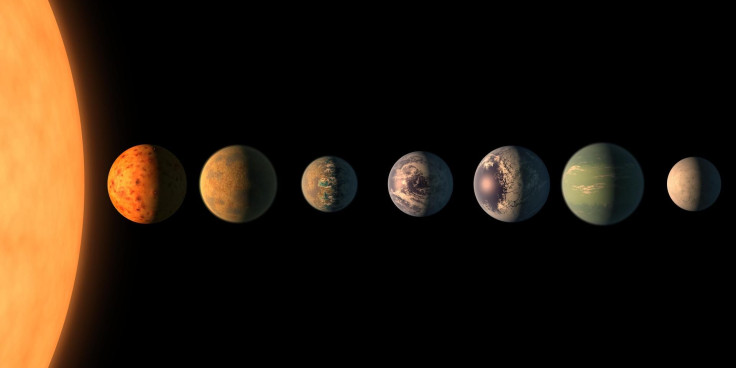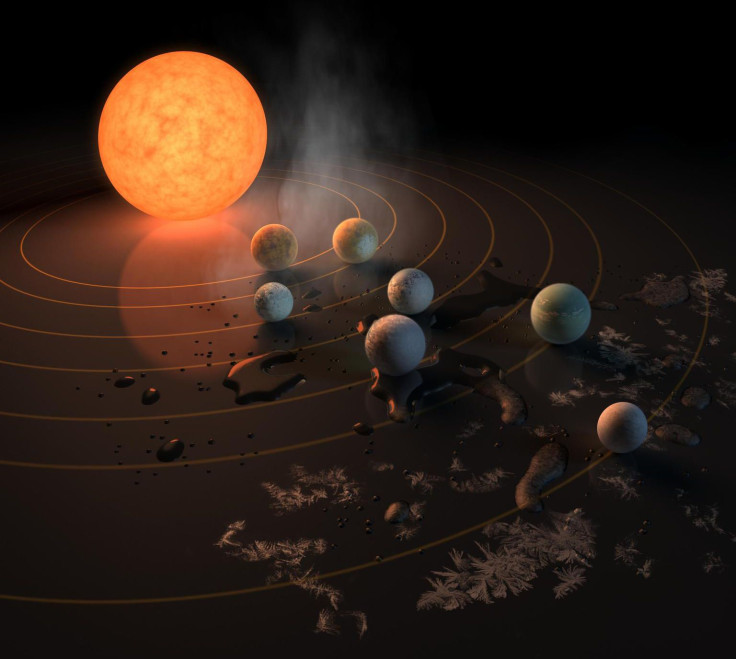NASA Planet Concept Art: How Artists, Researchers Accurately Depict Exoplanets, Stars, Galaxies

When NASA astronomers can’t capture a clear photo of a new star, planet, asteroid or cosmic event, they ask their concept artists to come up with a rendering of what the real thing might look like.
Those pieces frequently end up gracing news sites and papers or magazines across the country. Especially when they accompany a large announcement, like this year’s Trappist-1 discovery of exoplanets that may be able to host life. So the artists working on the concept art want to make sure they get it right, with as much detail as possible.
The artists who work on making the planets and stars that are light years away come to life actually use the data collected by researchers to make the art as accurate a representation of the real thing as possible, according to NASA.
The artists behind the now well-known images of the Trappist-1 planets used the properties from the Spitzer observations to derive what the planets might actually appear to look like and have on them if we were to travel there and see them with our own eyes.

“With TRAPPIST-1, I was immediately thinking, ‘This is going to be the most significant thing that has come out of the Spitzer mission.’ It's going to be the result that I think Spitzer will really be remembered for,” said Robert Hurt, a visualization scientist with the IPAC science and data center for astrophysics and planetary science at California Institute of Technology, in a NASA video.
Hurt and his colleague at IPAC, Tim Pyle, a multimedia producer, came up with the images for the Trappist-1 announcement. They used information about the planets including the diameter, orbital period, density, whether it’s tidally locked and other information gathered by Spitzer to come up with the illustrations NASA used when they announced the landmark exoplanet findings.
Read: 10 Stunning Images Of NASA Concept Art That Imagine Our Universe
The density of a planet, and whether it’s more or less dense than Earth, can indicate whether it might have water. A higher density than Earth indicates a rocky surface while a density lower than Earth’s might indicate the presence of water. Using this standard the artists were able to determine that two of the Trappist-1 planets would be water worlds. So they designed them to appear that way in the art pieces.
Information like this makes it possible for them to create art that shows more than location and guesses at what the planets may look like or how they might be oriented.
Hurt has his PhD in astrophysics from UCLA and Pyle is an artist who’s previously worked in Hollywood. Together the two bring two different perspectives to the artistic process which helps them create an accurate and artistically stunning product.
Watch the two explain how they come up with their best concept art here:
© Copyright IBTimes 2024. All rights reserved.











